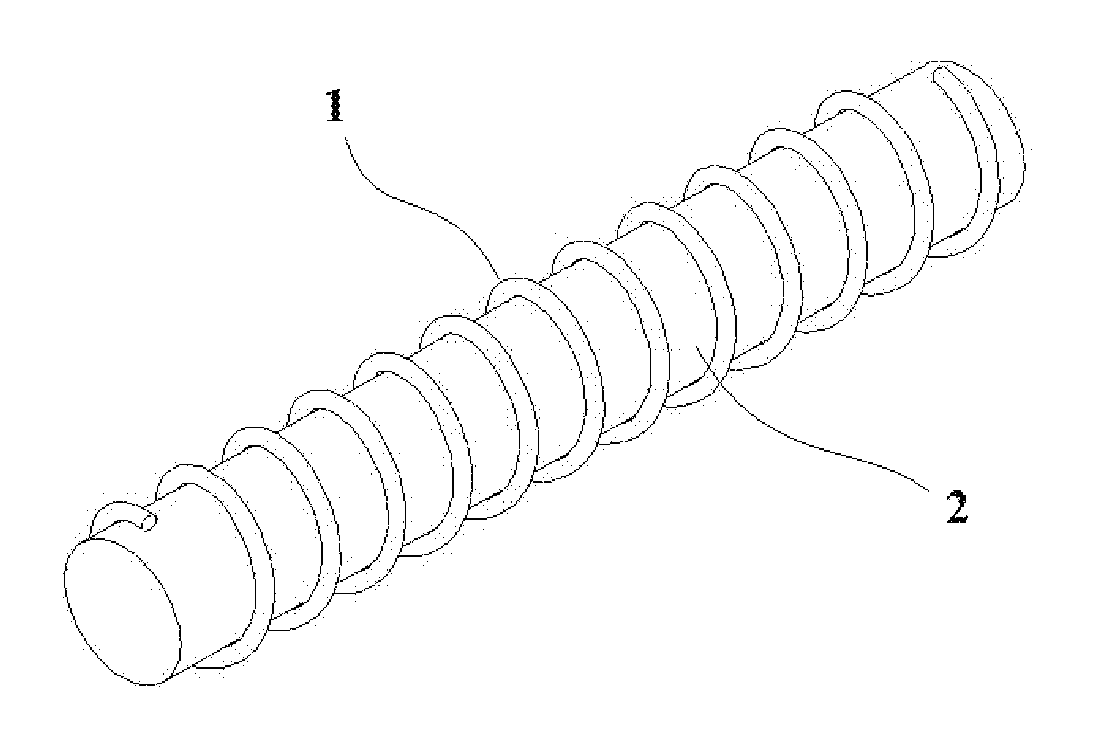Apparatus and method for tissue adhesion
a tissue adhesion and applicator technology, applied in the field of tissue modification and wound closure, can solve the problems of difficulty for some operators in tying and placing a proper knot in the suture, high degree of experience and manual dexterity, and each of the technologies has notable limitations
- Summary
- Abstract
- Description
- Claims
- Application Information
AI Technical Summary
Benefits of technology
Problems solved by technology
Method used
Image
Examples
first embodiment
[0049]A method for formation and use of an SMP tissue capture element embodiment with the deployment-engagement-removal activation capabilities that have previously been described is shown in FIGS. 9A-9E. FIG. 9A shows a SMP composite sheet 33 formed from two SMP material sheets 20 and 32 with transition temperatures Ttrans1 and Ttrans2 respectively. The composite sheet 33 is processed as previously described such that each sheet is in pre-strained states 20′ and 32′. A pattern for a tissue capture element is cut along the cut lines 26 which provide shaping for a flange 18 as previously described for the first embodiment and pointed tips for piercing tissue. The resulting tissue capture element 40 is shown in FIG. 9B. The tissue capture element 40 is flat as cut from the composite sheet, and must be suitably configured to facilitate penetration into the target tissue. To accomplish this, the SMP tissue capture element can be placed over a form and heat applied to the transition area...
embodiment 46
[0050]FIG. 10A shows another embodiment of a tissue capture element cut from a duel SMP composite sheet such as sheet 33 shown in FIG. 7A having a pointed tip for piercing tissue and a base 43 comparable in function to the flange of the prior embodiment for enhanced retention in a mold substrate as will be describe subsequently. The composite tissue capture element 42 shown in the deployment state is comprised of two pre-strained SMP polymer materials 20′ and 32′ (Ttrans1 and Ttrans2 respectively) which allow for the deployment-engagement-removal state transitions which have been previously described. The SMP composite shape memory element is shown above Trans1 in the engagement state 42′ in FIG. 10B with the SMP material 20′ transitioned to its unstrained state 20. The SMP composite shape memory element is shown above Trans2 in the removal state 42″ in FIG. 10B with the SMP material 32′ transitioned to its unstrained state 32. FIG. 11A shows a double version 44 of the composite tis...
PUM
 Login to View More
Login to View More Abstract
Description
Claims
Application Information
 Login to View More
Login to View More - R&D
- Intellectual Property
- Life Sciences
- Materials
- Tech Scout
- Unparalleled Data Quality
- Higher Quality Content
- 60% Fewer Hallucinations
Browse by: Latest US Patents, China's latest patents, Technical Efficacy Thesaurus, Application Domain, Technology Topic, Popular Technical Reports.
© 2025 PatSnap. All rights reserved.Legal|Privacy policy|Modern Slavery Act Transparency Statement|Sitemap|About US| Contact US: help@patsnap.com



